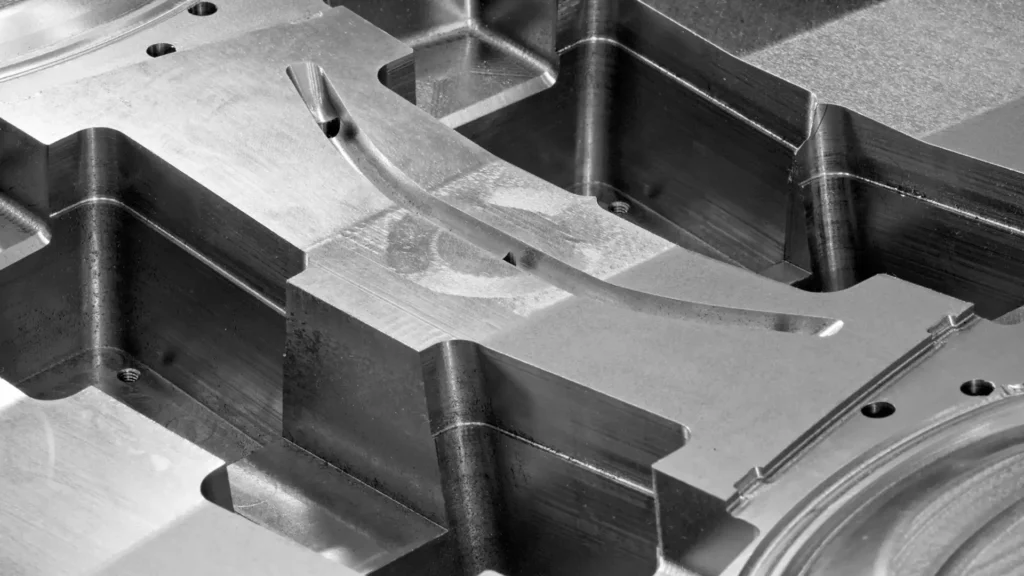Fusione di parti di mobili svolge un ruolo cruciale nella creazione di mobili durevoli ed esteticamente piacevoli. Per apprezzare veramente l'arte e l'artigianato dietro il casting di mobili, È importante comprendere i segreti e le tecniche che vanno in questo processo.

Le basi della fusione di parti di mobili:
La fusione di parti di mobili può essere definita come il metodo di creazione componenti di mobili versando metallo o leghe fuso in uno stampo per ottenere la forma desiderata. Questa tecnica è ampiamente utilizzata nel settore dei mobili in quanto consente di produrre parti intricate e precise. I materiali utilizzati nelle parti di mobili che gettano variano a seconda delle caratteristiche desiderate del prodotto finale. Metalli come il ferro, acciaio, e alluminio, così come varie leghe, sono comunemente usati. Questi materiali offrono durata, forza, e una vasta gamma di finiture. Diversi tipi di parti di mobili possono essere lanciati attraverso questo processo, Compreso gambe della sedia, basi da tavolo, e accenti decorativi, Aggiunta di eleganza e funzionalità al design generale.

Applicazioni di fusione di mobili comuni
– Gambe del tavolo:
La fusione di parti di mobili viene utilizzata per creare gambe da tavolo robuste e decorative, che forniscono stabilità ed estetica a tavoli di varie dimensioni e stili.
– Cornici delle sedie:
Il casting è impiegato per produrre cornici per sedie durevoli e progettate in modo complesso, Garantire forza e comfort per diversi tipi di sedie.
– Accenti decorativi:
Il casting consente la creazione di accenti decorativi come le guarnizioni decorate, Rosette, e pannelli decorativi che migliorano l'aspetto generale dei mobili.
– Hardware:
La fusione di parti di mobili viene utilizzata per produrre componenti hardware come tiri del cassetto, manopole, cerniere, e serrature, che aggiungono funzionalità e stile agli armadietti, cassetti, e porte.
– Cornici del letto:
La fusione aiuta a produrre cornici per letti di diversi design e dimensioni, Fornire supporto robusto e appello visivo ai letti.
– Braccia di divano e sedia:
Il casting consente la produzione di di divano e sedie a braccia, Garantire l'integrità strutturale e l'aggiunta di elementi architettonici ai mobili.
– Basi da tavolo:
Il casting è impiegato per creare basi da tavolo robuste e visivamente accattivanti, che forniscono stabilità e supporto ai tavoli da pranzo, tavolini, e altri mobili simili.
– Gambe di vanità:
Il casting consente la creazione di gambe di vanità eleganti e durevoli, Migliorare l'estetica e la funzionalità delle vanità del bagno.
– Staffe di scaffale:
La fusione di parti di mobili viene utilizzata nella produzione di staffe di scaffale, che offrono supporto affidabile per gli scaffali, librerie, e altre unità di archiviazione.
– CIRCHIPOGGIO CHARDEPIO:
Il casting può essere utilizzato per produrre circondazioni decorative del camino, Creare un punto focale e aggiungere fascino agli spazi abitativi.

La scienza dietro le parti di mobili getta:
Creare parti di mobili attraverso il casting è sia un'arte che una scienza. Il processo inizia con le considerazioni di progettazione.
Fattori come la funzionalità, estetica, e la fattibilità della produzione deve essere attentamente analizzata prima di procedere.
Viene quindi creato uno stampo, o attraverso il design assistito da computer (CAD) software o da artigiani esperti. Lo stampo, Spesso fatto di silicone o intonaco, svolge un ruolo critico nel processo di casting.
Il metallo fuso viene versato nello stampo, riempire lo spazio e assumere la forma della parte di mobili desiderata.
Una volta che il metallo si solidifica, lo stampo viene rimosso, e il pezzo subisce ulteriori processi di finitura per ottenere la trama desiderata, colore, e qualità della superficie.
Tecniche di fusione di parti di mobili:
Vari metodi di fusione sono utilizzati nella produzione di mobili, ciascuno con i propri vantaggi e limitazioni.
Colata in sabbia, uno dei metodi più tradizionali, implica la creazione di uno stampo imballando sabbia attorno a uno schema, che viene quindi rimosso per creare una cavità.
Colata di investimento, detta anche fusione a cera persa, richiede la creazione di un modello di cera rivestito in ceramica prima che la cera venga sciolta. Il guscio ceramico rimanente viene quindi riempito con metallo fuso.
Pressofusione, d'altra parte, implica l'uso di uno stampo in acciaio, dove il metallo fuso viene iniettato ad alta pressione.
Ogni tecnica di casting Offre vantaggi unici, come la creazione di forme complesse o il raggiungimento dell'alta precisione. La selezione del metodo più adatto dipende dai requisiti specifici della parte dei mobili da lanciare.

Controllo di qualità nella fusione di parti di mobili:
Il controllo di qualità è della massima importanza nella fusione di parti di mobili. Tecniche di fusione adeguate, materiali, e i processi di finitura devono essere implementati per garantire componenti di mobili durevoli ed esteticamente piacevoli. Testare la composizione del metallo o della lega, Oltre a condurre ispezioni durante il processo di fusione, aiuta a identificare e prevenire difetti comuni, come la porosità, restringimento, o imperfezioni di superficie. L'implementazione di rigide misure di controllo della qualità garantisce che il prodotto finale soddisfi i più alti standard di artigianato e durata.
Pratiche ecologiche nella fusione di parti di mobili:
Man mano che la domanda di pratiche sostenibili nella produzione cresce, L'industria della fusione di parti di mobili sta anche abbracciando approcci ecologici. I produttori si stanno attivamente cercando di ridurre il consumo di rifiuti e energia, oltre a ridurre al minimo l'impatto ambientale del processo di fusione. Ciò include l'implementazione di programmi di riciclaggio per materiali in eccesso e l'esplorazione di tecniche di fusione alternative che richiedono meno energia. L'uso di materiali riciclati aggiunge un elemento ecologico alla fusione di mobili, Evidenziando l'impegno del settore per un approccio più verde.
Conclusione
Rivelando i segreti e le tecniche delle parti di mobili che la casting ha fatto luce sul processo intricato dietro la creazione di componenti di mobili. Con particolare attenzione alla tradizione e all'innovazione, Il casting di parti del mondo del mobile continua ad evolversi e affascinare, Ispirare la creazione di mobili senza tempo e sbalorditivi.


















